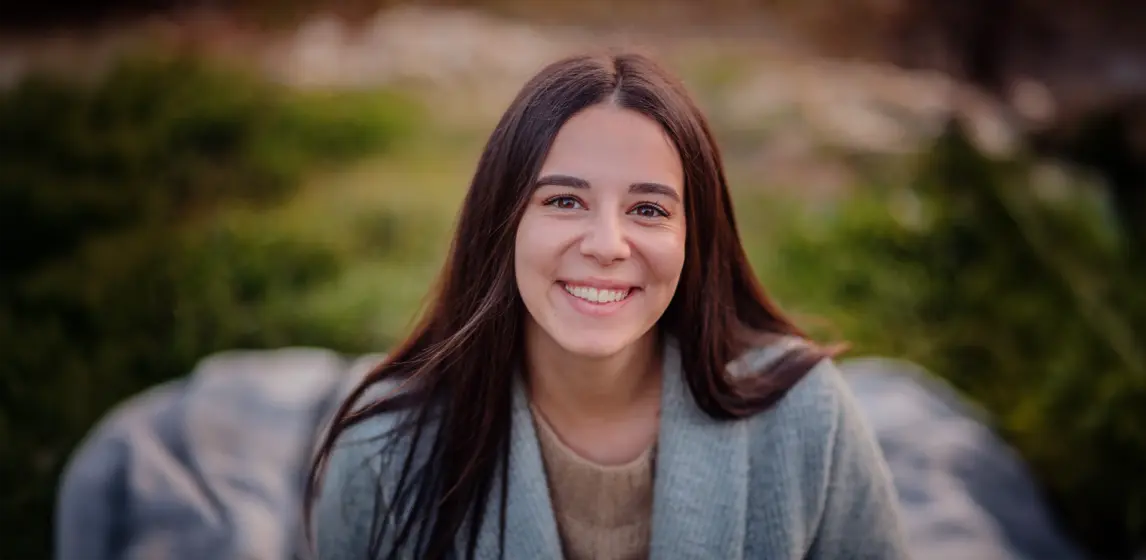Youth talk tips: 3 keys to asking good questions
 Rachel Dodd, DMin | Aug 6, 2024
Rachel Dodd, DMin | Aug 6, 2024
Can anyone relate to the anxiety I feel when asking questions in youth group? Whenever I pose a question, I know what happens next will be anybody’s guess. Students might answer the question and a lively conversion may ensue. Or one student may feel they know the “right” answer and the others will let them do all the talking. Perhaps the group’s answers will veer in a direction I wasn’t intending and we never get back on topic. Or, worst of all…I might be met with glassy stares and the sound of crickets.
Youth leaders, let me give us some good news: all of these outcomes are okay.
Here’s why: Educators have long known that knowledge is the foundation on which a student’s skills grow. So the very first thing a group’s response to a question tells us is, do these learners know what I’m assuming they know? Right off the bat, students’ responses (or lack thereof) give us useful information we can apply to our ministry planning.
But there’s so much more to be explored when asking and answering questions. Bloom’s Taxonomy, a tool teachers often use as they plan, demonstrates the process in which a student understands and uses information based on foundational knowledge. It looks like this:

Armstrong, P. (2010). Bloom’s Taxonomy. Vanderbilt University Center for Teaching. Retrieved 7/1/24 from https://cft.vanderbilt.edu/guides-sub-pages/blooms-taxonomy.]
If you ever had someone offer you the annoyingly cryptic advice, “You have to learn the rules before you can break them,” (shout-out to my 10th-grade English teacher for that gem), this diagram illustrates why. As you can see, the mind of a student begins by remembering and understanding basic facts and concepts. It then has to practically apply that information and look at it from different angles, comparing or contrasting it with other concepts the student already understands. The work of debating or defending the concept or applying it to new scenarios—often what we do when we engage in theological debate, write a sermon, or lead a new ministry—is the highest level of cognitive process. Your teenagers’ minds are capable of these things, but they’ll need to engage each level of the learning process to get there.
The tricky part is, youth groups are not classrooms. Even with our most thoughtful planning, students come and go, programs change, and Bible teaching plans are adapted and adjusted—meaning that at any given gathering you have students for whom:
- what you’re teaching is brand new. This group is hearing a concept for the first time and working on understanding it.
- the concept is something they’ve heard before but haven’t applied. These students are connecting dots and figuring out what it means for their life and faith.
- your topic is well-worn terrain. This crew has lived out the concept a little and probably bumped into some situations where applying it is complicated. They need to evaluate different perspectives and talk about complex circumstances.
Sounds like an impossible situation, right? But let’s look at it from another perspective.
Try a new perspective on asking questions in youth group
What if your job isn’t to get students to answer questions correctly? Or even enthusiastically?
What if asking the question is the win?
Perhaps it’s no surprise that Jesus asked 307 questions throughout the four gospels. (That’s far more questions than he was asked!) Because a good question always presents students with an opportunity to grapple with it, apply it to their understanding, and grow.
So whatever questions you ask your students, don’t sweat the answers (or even the silence) you might get. You’re doing faithful work by posing questions in the first place. However, doing a little legwork before you ask can help you make the most of your discipleship with young people.
3 questions to ask yourself before asking teenagers a question
1. Who’s in the room?
Think about the mix of students you have. Ages, personality types, and levels of familiarity with the Bible are all factors that will affect your students’ engagement with your question. Before developing a Bible study or lesson plan, start with a little prayerful reflection on the teenagers who are likely to be listening, then write questions that start where they’re at.
2. What do I want my question to accomplish?
For every question you plan, ask yourself: What’s the outcome I’m hoping for? Is it…
…getting students interacting with one another?
…assurance that students understand what I’ve said?
…a vibrant debate?
…students gaining awareness of different points of view?
…deep reflection?
…practical application or action?
Gaining this clarity for yourself can help you think of questions as tools to set your students on the path you’re aiming for. If your goal is students growing comfortable with one another, ask questions that call for low-risk or lighthearted sharing. If your aim is debate, you might partner quieter students with ones who feel comfortable speaking and give groups time to discuss and plan their response. Deep reflection or personal application may lend itself best to quiet journaling before inviting students to share.
3. How can I help my students feel confident enough to share?
Think about it—did you always feel confident sharing your thoughts and opinions in groups as a teenager? My guess is probably not. Creating an atmosphere of safety and belonging is one of the most valuable ways to ensure your teaching is effective.
Create safe space by communicating some boundaries: In this room, there are no wrong answers. We’re all on a journey. When someone shares, we thank them. What’s said in the room stays in the room. Doubt is okay. We don’t all have to agree—and if we don’t, here’s how we’ll handle it. Etc. Lean into what you know (or ask them!) about your students’ personalities, group dynamics, and familiarity with the topic and anticipate their needs.
Create safe space by giving students options on how they can respond. Remember, asking a student to answer out loud assumes that they’re ready and willing to process externally. But just like all of us, some students are external processors and others are wired to do their thinking internally. If your teens seem hesitant to answer (or you suspect they will be), give them the option to journal, doodle, or think on it, and come back to the question again later.
Asking questions and wrestling with doubts is part of nurturing a strong faith. So take courage, friends, and keep asking teenagers good questions!
Free download: Get 10 active ways to get teens answering questions
Want more tips and inspiration on asking questions in your youth ministry? Download our free resource!

In a curriculum-planning rut?
Get easy-to-prepare resources for conversations that go deep.

Our On-the-Go resource collection gives you short, easy-to-use youth group discussion guides and prayer activities based on the FYI research you trust. Say goodbye to stressful planning and prep so you can focus on relational connection with your teens and your team.
More From Us



Sign up for our email today and choose from one of our popular free downloads sent straight to your inbox. Plus, you’ll be the first to know about our sales, offers, and new releases.



